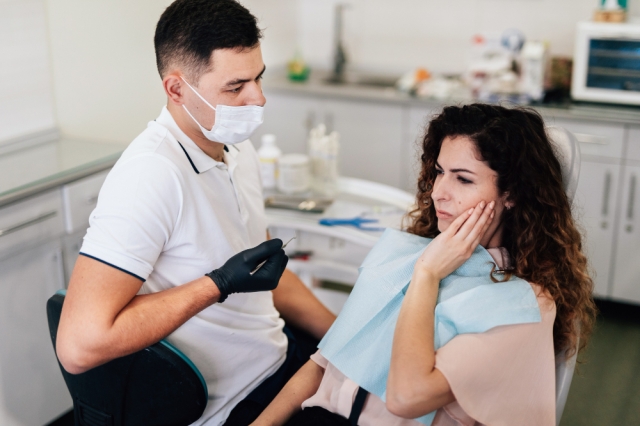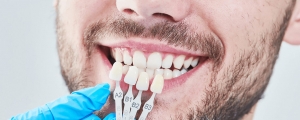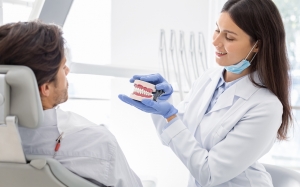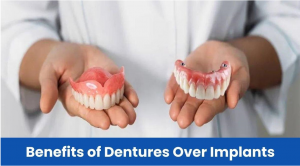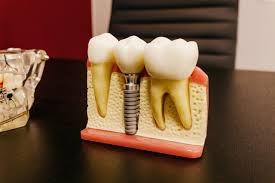If you have noticed persistent white patches or sore spots inside your mouth that do not go away, it could be more than just irritation. These symptoms may indicate a chronic condition called oral lichen planus. Understanding this condition is important because it affects your comfort, oral function, and even your long-term oral health.
When you visit a qualified Dentist in Burlington, they can identify the signs early, confirm the diagnosis, and create a treatment plan tailored to your needs. In this guide, you will discover how dentists diagnose and treat oral lichen planus in adults, step by step.
What is Oral Lichen Planus?
Oral lichen planus is a long-term inflammatory condition that affects the mucous membranes inside your mouth. It often appears as white, lace-like patches, red, swollen tissues, or open sores that can cause discomfort or burning sensations.
While the exact cause remains uncertain, dentists know that it is linked to an overactive immune response. In some people, stress, genetics, certain medications, or dental materials can act as triggers. This means your immune system mistakenly attacks the tissues inside your mouth, leading to inflammation.
Although oral lichen planus is not contagious, it can significantly impact your quality of life. Persistent soreness, difficulty eating spicy foods, and chronic inflammation can make everyday activities uncomfortable.
Why Is Early Diagnosis Essential?
Early diagnosis plays a crucial role in preventing complications. Left untreated, oral lichen planus can lead to painful ulcers, secondary infections, or, in rare cases, an increased risk of oral cancer.
Seeing your dentist promptly when you notice unusual mouth changes is essential. Dentists are trained to identify oral tissue abnormalities, differentiate them from other conditions, and provide appropriate treatment before the condition worsens.
How Dentists Diagnose Oral Lichen Planus
Dentists follow a systematic approach when diagnosing oral lichen planus. The process involves several precise steps to ensure accuracy and effective treatment planning.
1. Comprehensive Medical and Dental History
The first step your dentist takes is understanding your complete medical and dental history. They ask about any medications you are taking, ongoing health conditions, lifestyle habits, and recent stress levels. This information helps them identify potential triggers or associated health issues that may contribute to your symptoms.
2. Thorough Oral Examination
Next, your dentist carefully examines the inside of your mouth. They look for specific patterns and features characteristic of oral lichen planus, such as white, lace-like streaks on the cheeks, gums, or tongue. They may gently palpate the tissues to check for tenderness or thickened areas.
Because this condition can resemble other oral diseases, such as leukoplakia or candidiasis, precise examination is crucial to avoid misdiagnosis.
3. Biopsy and Laboratory Tests
If the dentist suspects oral lichen planus, they may recommend a small biopsy. During this procedure, a small tissue sample is taken from the affected area and sent to a laboratory for microscopic examination. The biopsy helps confirm the diagnosis and rule out other possible conditions, including precancerous changes.
Sometimes, additional tests may be performed to check for fungal or viral infections or autoimmune markers. These tests ensure a complete understanding of your condition and guide your treatment plan.
How Dentists Treat Oral Lichen Planus
There is no single cure for oral lichen planus, but effective management can significantly reduce symptoms and prevent flare-ups. Dentists develop treatment plans based on the severity and type of lesions, as well as your overall health.
1. Reducing Inflammation and Pain
The main goal of treatment is to reduce inflammation and relieve discomfort. Dentists often prescribe topical corticosteroids in the form of gels, ointments, or mouth rinses. These medications control immune activity and minimize pain.
If symptoms persist, your dentist may recommend stronger systemic medications, such as corticosteroid tablets or immunosuppressive drugs. These help manage severe inflammation that affects larger areas.
2. Eliminating Potential Triggers
Your dentist will also evaluate potential triggers that may worsen the condition. This can include removing dental restorations made from materials that may cause irritation or allergic reactions. If a specific medication is suspected to be the cause, your dentist may collaborate with your physician to explore safer alternatives.
3. Managing Secondary Infections
Because oral lichen planus weakens the mucosal barrier, you may be more prone to fungal or bacterial infections. Your dentist may prescribe antifungal or antibacterial medications to prevent or control these complications.
Proper oral hygiene is also essential. Your dentist may recommend a gentle fluoride toothpaste, alcohol-free mouthwash, and soft-bristle toothbrush to reduce irritation.
4. Regular Monitoring and Follow-Up
Even after the symptoms improve, ongoing monitoring is necessary. Your dentist will schedule periodic checkups to evaluate healing, identify any recurrence, and ensure that no suspicious changes occur. This long-term follow-up is critical for maintaining oral health and detecting early signs of potential complications.
Dentists often use intraoral photography or digital imaging to track your progress and make adjustments to your treatment plan when needed.
Lifestyle and Home Care Recommendations
Dentists emphasize that effective management also depends on your daily habits. You play an active role in maintaining your oral health and preventing flare-ups.
Here are a few recommendations your dentist may give you:
- Avoid spicy, acidic, or crunchy foods that irritate the mouth lining.
- Maintain a balanced diet rich in fruits, vegetables, and antioxidants.
- Quit smoking and limit alcohol consumption.
- Manage stress through relaxation techniques, yoga, or counseling.
- Practice meticulous oral hygiene with gentle brushing and regular dental visits.
Final Thoughts
Oral lichen planus may sound intimidating, but with expert dental care, it is manageable. A professional Dentist in Burlington will provide an accurate diagnosis, effective treatment, and continuous support throughout your care journey.
By following your dentist’s recommendations and maintaining a healthy lifestyle, you can keep your mouth comfortable and your smile healthy. Remember, your oral health reflects your overall well-being, so make it a priority to address any concerns early.
